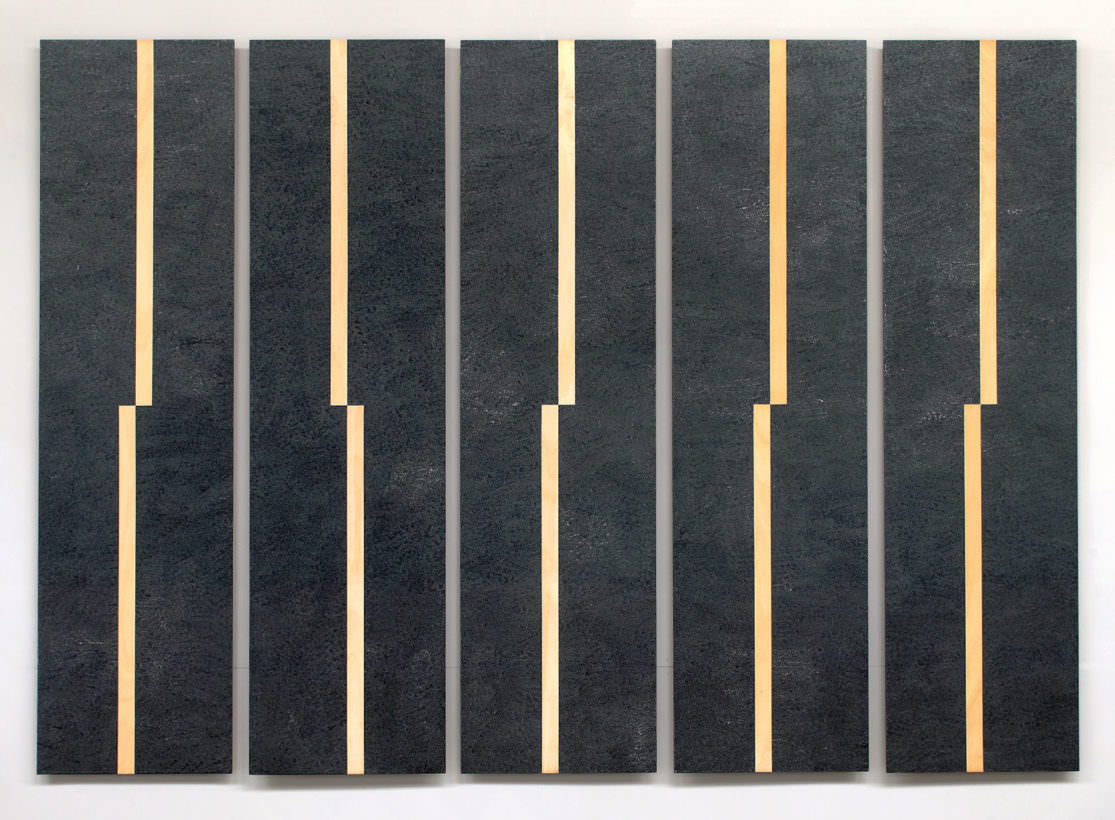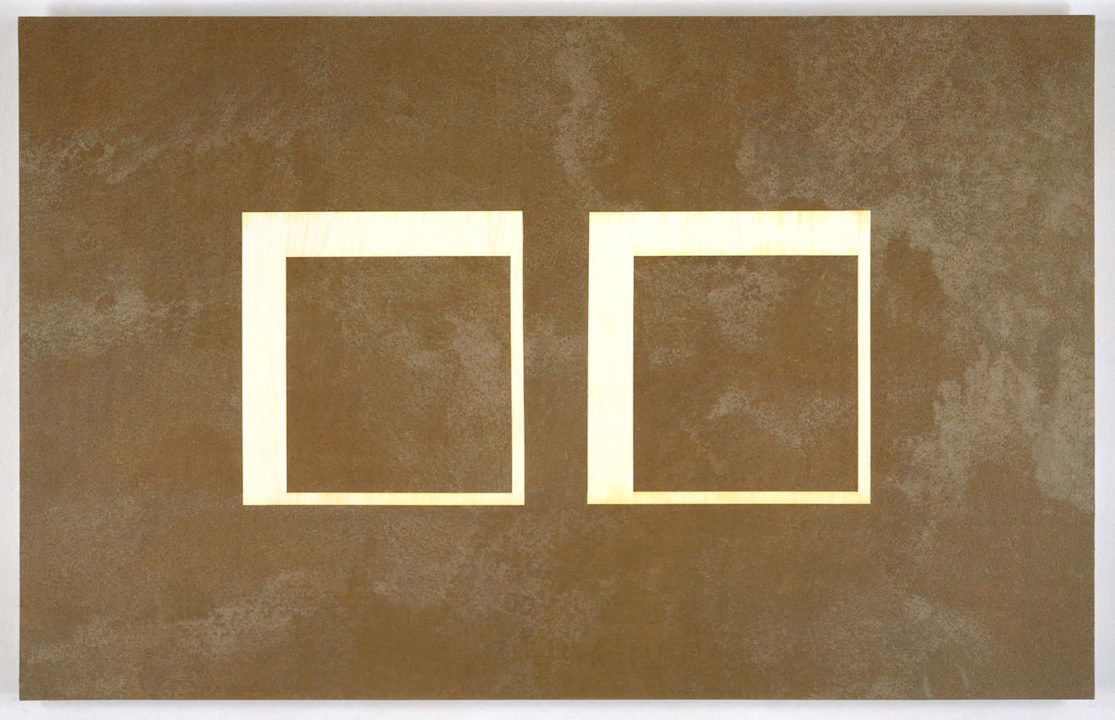Maria C. Holter
EQUATIONS
Text for catalogue ‚IST +IST‘
1994
The Austrian artist Barbara Höller likes to play with words and imagery. When she talks about her art the language is rich with ambiguities, multiple meanings and metaphors. But as is true for most visual artists, her images are much more powerful as similes for the unspeakable than words ever could be. „Winkelbild“ („angle-image“), „blinkers“ and „poker“ or „IST“ (meaning as much „is“ as „equals“) and „UND“ („and“ or „plus“) are titles from her new series of work. Can minimalist language better interpret indescribable visual expression?
As the eye of the untrained beholder lingers on the recognizable, the mind of the lazy thinker lingers on banalities. The squares, almost-squares, not-quite-rectangles, and angular frame-shapes present themselves openly to the viewer; but they are not really the subject matter of this series. They are vacancies in a thin layer of paint, voids that turn the visible ground into an open field for projections of multiple meanings. What are image(ery) and context in these paintings? What is subject matter and what is back-drop? Höller is bringing together seemingly irreconcilable polarities. In her new series she does not articulate the „either or“ in visual language but the „as well as“.
IST
At first sight these „paintings“ exude coolness – so does the process of making: the formats are determined by subdivisions of prefabricated plywood panels. To keep the sketched out shapes on the panel free of paint, the artist covers them up with tape, then paints over them with primer and a mixture of tempera and aluminum pigment, and finally carefully removes the stencils. The metallic quality of the surfaces and the pictograms evoke high-tech-imagery: the world of computers, wiring diagrams and electronic circuits.
The almost mechanically produced surface nevertheless bears the distinct handwriting of its maker. It is full of surprises, allowing the eye to glide from matt, nearly transparent areas to accumulations of vividly shining metallic pigment. The crisp geometric shapes are thus contradicted and diffused by their surrounding color fields: never garish in tone, though not mute – metallic and earthly glows, blues telling of a moonless night and foggy shades of gray.
UND
„If you want to name it, I feel some kind of vibration to the very depth of my scalp. The ears are drawn upwards, I can even feel the strain in my hair and my mind is filled with distrust…“, reads one of Höller’s entries into her sketch-book related to the „IST UND IST“ series. Confronted with her new paintings, the viewer’s bodily and spiritual experience might be similar. Looking at the reappearing simple shapes and compositions one feels uneasy: do they not suggest order, symmetry and mathematical logic, even monotony? The artist merely teases the expectations of the audience. Even the most familiar looking shapes turn into objects of irritation when seen in the context of their position within the format. Formal assumptions are constantly contradicted. Equal shapes do not appear the same. Considering the off-center, off-balance blank spaces, the viewer slips into a state of instability, thus yearning for equilibrium within the work of art and him/herself.
Do, then, questions of content and subject-matter really apply to Höller’s art? Must lines between implication and depiction be drawn? Have these classifications not become fragile and finally crumbled? Furthermore, are not the contradictions in Höller’s visual expression – geometric abstraction on the one hand and gestural mark-making on the other hand – the very essence and strength of her work?
IST
Barbara Höller’s panel paintings are mounted on 3-cm-deep steel frames that are invisible from the front, allowing the images to hover at a distance before the wall. In this respect her work can better be referred to as installations/objects than traditional panel paintings. Höller herself thinks about her art in that way as well: she talks about the object – which although definable in its „thingness“ – can neither be comprehended as solid on the wall nor located in the surrounding space, rather somewhere „in between“ – „as a fragment of reality mirroring the whole… transitory, uneasy, untouchable.“
Not only is the space around the individual art object part of Höller’s conception, but the „gap“ between neighboring panels as well – especially in her double images. The inter-spaces usually coincide in their width with the numerical proportions of the compositions. Sometimes the gap links fragmented geometric shapes on either side of the void so that they can be read as one. Whereas seemingly merging lines divided by the inter-space fail to meet under closer observation, a deliberate shift of one panel in a double image may bring two separate lines together.
Space, inter-space, and the viewer’s space in relation to the work of art are an essential part of Barbara Höller’s conceptual thinking. The eye of the beholder lingers on individual shapes, comparing, differentiating or identifying them with others. The observer ascribes meaning to these shapes, continuing the art-making process in the gallery. Barbara Höller is a demanding artist. Her images require participation, seeing and not merely looking.
(Translation: Maria C. Holter and Christopher Barber)
Maria C. Holter ist Kunsthistorikerin, Kuratorin und Vermittlerin und lebt in Wien.

